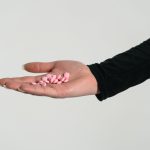
Healing Response – Self-healing after cruciate ligament rupture
Munich – The horror diagnosis in the knee: cruciate ligament rupture! Normally, this means: surgery, cruciate ligament suture or cruciate ligament replacement – and often months pass before the injured person can put proper weight on the knee again.
Who wouldn’t want a quicker and gentler alternative?? The principle of Healing Response surgery is just that: The method is based on the fact that the cruciate ligament is stimulated to heal itself with small stitches. This shortens the healing time, the surgery is shorter and no artificial plastic is used.
The method of Healing Response is not new – but it has not been used much so far. In the past, Healing Response was evaluated differently as a treatment method.
It was knee specialist Richard Steadman from Vail in Colorado who increasingly used the method in the 1990s and conducted his first study on the fitting of a Healing Response in 2002: The success rate of more than 80 percent for freshly torn or torn cruciate ligaments caused a sensation everywhere.
The principle of Healing Response
Professor Dr. Peter Diehl is a specialist in orthopedics and head physician for minimally invasive shoulder and knee joint surgery at the Orthopedic Center Munich East and has already successfully performed many cruciate ligament surgeries.
“Healing Response is an arthroscopic surgical method. Here, special techniques are used to induce bleeding at the origin of the cruciate ligament, so that a stem cell reaction or scarring leads to increased healing. We thus set a healing process in motion by means of small stitches.”
So the cruciate ligament is re-excited. After the two arthroscopic procedures have been set, any accompanying injuries are first treated, z.B. on the meniscus or on the cartilage. After that, the cruciate ligament stump or the remaining fibers are stimulated to heal themselves.
To do this, the bone at the point where the cruciate ligament typically tears out is refreshed with a small special drill and the cruciate ligament is placed back in its anatomical attachment point in the thigh area.
Stem cells are released from the bone marrow along with the blood, allowing the cruciate ligament to reattach to the bone via a stable scar tissue.
In addition to the preservation of the tendon and faster recovery, another advantage is that frequently present concomitant injuries can also be treated immediately, such as meniscus tears.
“In addition, it is often possible to preserve the remaining nerves in the cruciate ligament stump during the healing response,” says Prof. Diehl.
This is important because these nerves are responsible for proprioception, which triggers reflexes in the surrounding protective and supporting muscles. This means: In the event of a twist, the musculature tenses reflexively and thus protects knee structures.
Prerequisites for a Healing Response
Prof. Diehl: “Do not wait longer than absolutely necessary!”It is optimal to operate within the first two weeks after the injury. “From our experience, the younger the patient, the higher the chance that this method will be successful. The procedure is possible up to six weeks after the injury,” says Prof. Diehl.
Later, a healing response is usually not performed and a cruciate ligamentoplasty is done instead, for which a healthy tendon is usually taken from the knee joint area.
Ideal for this kind of treatment is according to Prof. Diehl a partial rupture with the synovial tube largely intact – this is the thin sheath around the cruciate ligament, which then acts as a guiding structure. But the anterior cruciate ligament can also be severely torn or completely torn off. Cruciate ligament fibers that are still intact have a positive effect on healing in every case.
The decisive factor is where the ligament is torn – a healing response can only be performed if the cruciate ligament is torn directly on the thigh. Another prerequisite for surgery is an otherwise well-preserved cruciate ligament stump.
Aftercare of a Healing Response
The leg must not be stretched for several weeks (usually 4 to 6 weeks); after the operation, a period of approx. 20 degrees or immobilized for about 3 weeks. The reason: In full extension, the cruciate ligament is constantly under tension and thus could not heal without interference.
Flexion is limited to 90 degrees as the procedure progresses. During this time, the patient wears a knee joint orthosis. Despite this restriction of movement, the leg can usually be properly loaded after a short time.
The protective and supporting muscles must be built up just as quickly as in conventional surgery in order to protect and stabilize the cruciate ligament and the knee joint.
Prof. Diehl: “With my patients, the success rate is over 80 percent. Surgery involves much less trauma than cruciate ligament reconstruction. The affected person is able to work and do sports again much more quickly. Another advantage is that concomitant injuries can be treated immediately.”
About Prof. Dr. med. habil. Peter Diehl
Prof. Dr. med. habil. Peter Diehl is a specialist in orthopedics and head of minimally invasive shoulder and knee surgery. He studied medicine at the Technical University of Munich and has been a specialist in orthopedics since 2006 and in trauma surgery since 2009.
After working in international hospitals, he specialized in shoulder and knee joint surgery as head of sports orthopedics at the University Hospital rechts der Isar and the University Hospital Rostock. One focus of his work is minimally invasive joint surgery and regenerative cartilage therapy.
His scientific focus is on the research and development of cellular studies for the regeneration of cartilage tissue and their clinical implementation.
Prof. Dr. Peter Diehl has played a key role in the development of modern and minimally invasive surgical procedures and has so far authored over 100 publications in international journals and books, given over 200 lectures worldwide and been responsible for the scientific management and organization of several congress events.





